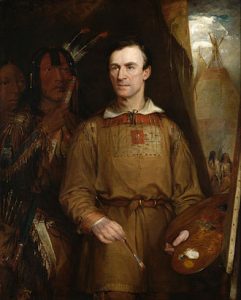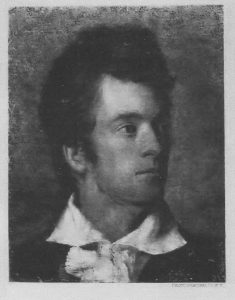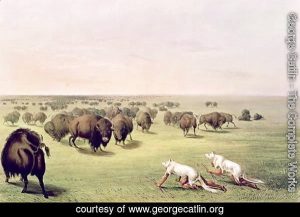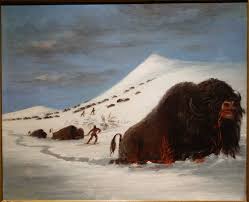George Catlin (July 26, 1796 – December 23, 1872) was an American painter during Victorian times and writer who specialized in portraits of Native Americans.
His paintings constituted invaluable details of Native American culture in the 19th century. He recorded Native American culture in his sketches and portraits.
Early Life Of George Catlin
George Catlin was born in Wilkes-Barre, Luzerne County, Pennsylvania. During his childhood days, he spent many hours hunting, fishing, and pondering over the American Indian’s tales and culture.

Catlin had little or no formal training as an artist, but he grew up hearing tales of Indians from settlers and from his own mother, who at age 7 had been abducted and later released unharmed.
His fascination for the Native Americans was motored by the experiences of his mother and later on, when a group of Native Americans came through Philadelphia, he witnessed them in the flesh which made an everlasting impact on him.
George Catlin Biography
Catlin was the fifth of 14 children. Though he had a talent for drawing, he was made to follow the importunings of his father, Putnam Catlin, and studied law. After completing his studies,

In 1820, he set up a practice near Wilkes-Barre, Pennsylvania, but he ended up sketching judges, juries and “culprits” in court, which made him quit his practice as a lawyer in 1823 and moved to Philadelphia to try his hand as an artist.
Career Of George Catlin
Catlin earned commissions to paint the leading figures of the day, including Sam Houston and Dolley Madison but struggled to find a larger purpose to his work. soon after achieving important commissions and critical acclaim, Catlin was elected to the National Academy of Design in 1826.

In 1830 he accompanied General William Clark on a diplomatic mission up the Mississippi River into Native American territory which made him determined to record the Native American heritage.
George Catlin Books
Highly Ambitious Catlin made five trips in six years and painted over 50 tribes painting their cultures immortal. He exhibited these works in the United States and Europe from 1837 to 1845 by the name of “Indian Gallery.”

In 1841 he published his best-known book, the two-volume Letters, and Notes on the Manners, Customs, and Condition of the North American Indians, which was illustrated with many engravings.
George Catlin Paintings
In order to preserve his life’s work, Catlin wanted to sell his Indian Gallery to the U.S. government but In 1852 due to personal debts, he was forced to sell the original Indian Gallery to The industrialist Joseph Harrison.

During the last 20 years of his life, Catlin re-created his collection and painted about 400 paintings. This second collection of paintings is known as the “Cartoon Collection,” since the works are based on the outlines he drew of the works from the 1830s.
George Catlin’s Style Of Work
The bulk of Catlin’s collection of works, which is mainly of ethnographic and historical interest. While he was in New York City he displayed it as salon-style, stacked floor to ceiling, one above the other—row after row of faces identified by name and number.
These faces attract the watcher towards themselves. Catlin called his gallery a “collection of Nature’s dignitaries. Though his faces are mesmerizing, Catlin’s landscapes are equally evocative, depicting virgin rivers and rolling hills.

His inspiration was the great herds of buffalo, antelope, and elk roaming “a vast country of green fields, where the men are all red. He sketched figures and faces, leaving details to be finished later.
Throughout Catlin’s career, he got mixed responses some journalists praised his work whereas some art critics dismissed him as an “American primitive,” calling his artistry “deficient in drawing, perspective and finish.”
George Catlin’s Works
Some of his greatest works include:
- Buffalo Bull’s Back Fat, Head Chief, Blood Tribe
- ‘White Cloud’, Head Chief of the Iowas, 1844-45
- Seminole Chief Osceola
- General Winfield Scott (1786-1866), c.1835
- Portrait of Osceola (1804-38)
- Portraits of Grizzly Bear and Mouse
- Buffalo Bull A Grand Pawnee Warrior 1832
- Sioux Indians hunting buffalo, 1835
- Indian Ball Game
- Hunting Buffalo Camouflaged with Wolf Skins, c.1832
- Comanche warrior with a shield, lance and bow, and arrows, c.1835
More Info On- Max Beerbohm, John Collier, George Moore, Benjamin Disraeli